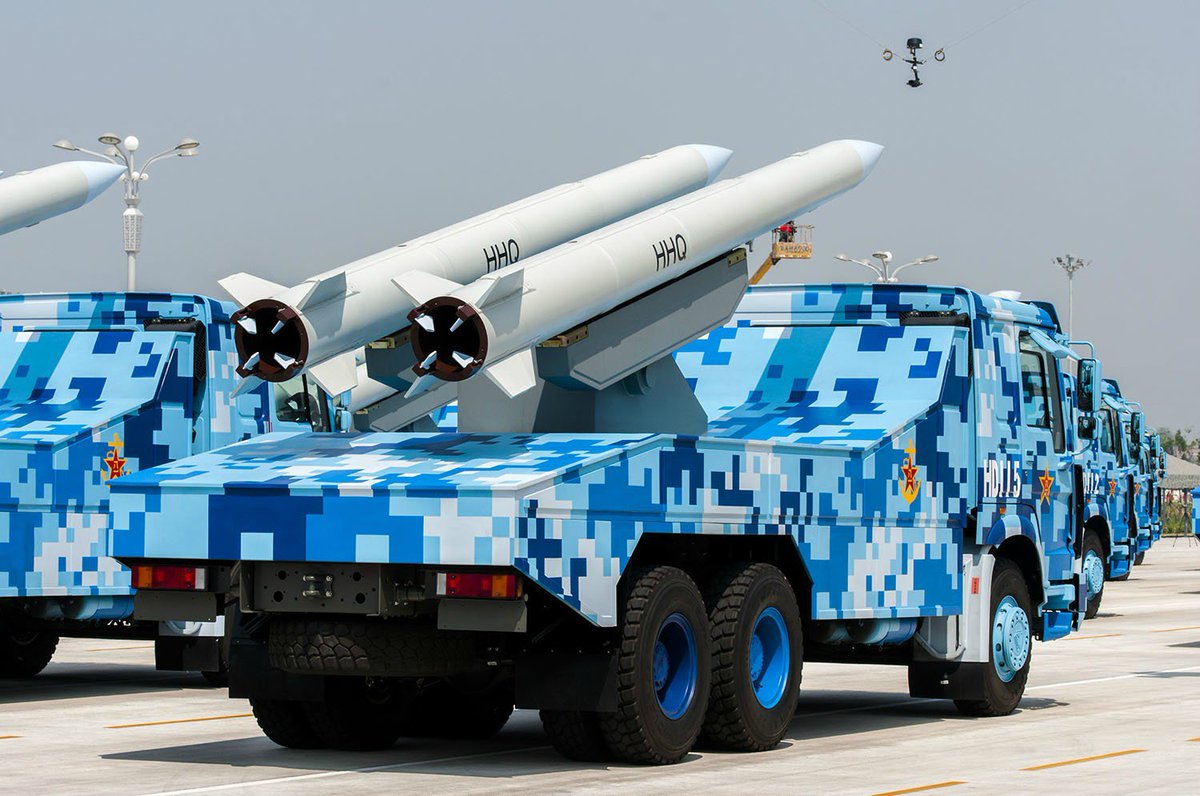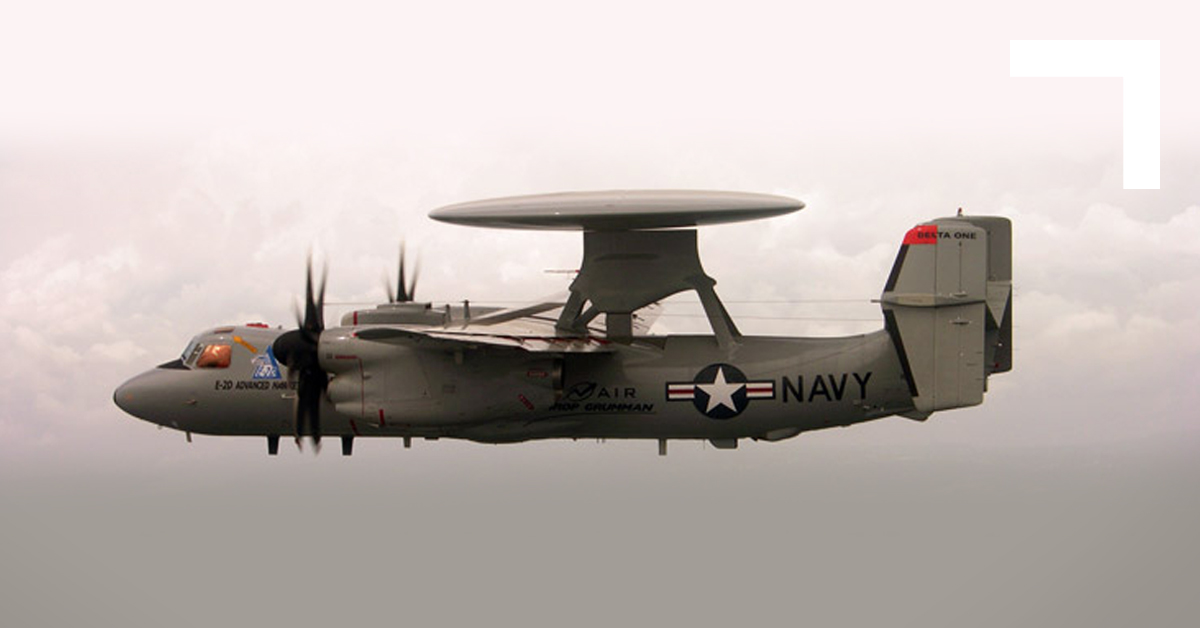As Taiwan faces increased aggression from China, Taipei fears that J-12 Anti-Ship Missile could override the island’s natural barrier.
According to a Taiwanese military publication, Taiwan requires an inventive method to defeat the YJ-12, mainland China’s most powerful supersonic cruise missile. The missile had been deployed to mainland China’s shoreline and artificial islands in the South China Sea, posing a direct threat to Taiwan and American aircraft carrier strike groups, South China Morning Post quoted the military publication.
About a month ago, China carried out live-fire drills with its H-6J bombers that were carrying the YJ-12 anti-ship missiles under its belly. This is indicative of the versatility of the cruise missile that could be fired from multiple platforms, much to the detriment of Taiwan.
According to an article published in December’s edition of the Taiwanese military’s bimonthly Navy Professional journal, the YJ-12 is Beijing’s most dangerous anti-ship missile because of its range and speed. It can be launched from land, air, and sea, and has advantages over ship-borne air-defense systems on American aircraft carriers.
“The Taiwan Strait is no longer a natural barrier to deter a growing and powerful PLA from across the waterway, and none of the Taiwan warships is able to deal with the powerful YJ-12,” it read.
Earlier in 2021, the Taiwanese Ministry of National Defense had outlined in a biennial military strategy report that it aims to use the Taiwan Strait’s natural barrier as a force multiplier, with the military increasing weapon ranges to put Chinese airfields, ports, and assembly areas directly across the waterway within reach, forcing Chinese troops to assemble further away and lengthening their sea transit.
However, the current observation indicates that the YJ-12 missiles override the natural barrier protection that Taiwan could until now afford.
“In such a military disparity, the Taiwanese military has to carefully assess its position and try to come up with innovative and asymmetric strategies to hit the enemy’s weakness.”
The strategy document had also listed the plan to expand its military deterrence to Chinese coasts to create hostile and seafaring phases for the PLA, in an event of an attack for which they attempt to cross the Taiwan Strait.
Thread-1 China militarizes the South China Sea – China deploys YJ-12 supersonic anti ship missiles in 3 islands – 400km range #China #Asia #AsiaPacific #IndoPacific #SouthChinaSea pic.twitter.com/JjzN7W6ODa
— Indo-Pacific News – Watching the CCP-China Threat (@IndoPac_Info) May 3, 2018
However, the deployment of the lethal Chinese missile in the South China Sea and Taiwan’s lack of air defense systems is the reason why the self-governing island’s military commanders have reasserted the need for asymmetrical strategies.
The YJ-12 has been deployed to the Fiery Cross, Mischief, and Subi reefs — three artificial islands erected by the PLA in the South China Sea –the article said citing satellite pictures. These missiles are probably aimed at dissuading American and Japanese vessels from coming to Taiwan’s help if it is attacked by the PLA.
Taiwan is seen by Beijing as a renegade province that it wants to annex, if necessary by force. In October last year, Chinese President Xi Jinping had sounded the bugle on Taiwan’s reunification with the mainland.
In the latest spate of aggression against Taiwan, China is said to be using cognitive warfare to wear out Taiwanese defenses and to repel the United States from the region.
Why YJ-12 Could Be Taiwan’s Nightmare
The People’s Liberation Army (PLA) missile development was inspired by the former Soviet Union’s asymmetric doctrine – focused on its original advantages and specialties – as a means of countering the US’ aircraft carrier strategy, according to the article, written by active naval commanders Chen Yi-cheng and Luo Zhen-yu.
The YJ-12 is an air-launched, anti-ship cruise missile (ASCM) that China deploys on its H-6K medium-range strategic bombers. The YJ-12 has a range of 400 kilometers, can achieve Mach 3 speeds, and can undertake airborne evasive maneuvers before striking its target.

The YJ-12 is the “most lethal anti-ship missile China has manufactured thus far,” according to the Pentagon. It creates a variety of security problems for US naval forces in the Pacific.
The YJ-12’s danger stems from its 400-kilometer range, giving it the world’s longest-ranged ACBM, as well as its ability to travel at high speeds. This makes protecting US ship strike groups with Aegis Combat Systems and SM-2 surface-to-air missiles challenging.
H-6J carrying 4 YJ-12 AShMs
(Images via CCTV) pic.twitter.com/Disi4UCYlp— 彩云香江 (@louischeung_hk) August 1, 2021
The antenna array aboard the American navy’s early-warning aircraft had a detection range of roughly 320 kilometers (200 miles), but the YJ-12 missile had an operational range of over 400 kilometers, according to the Taiwanese article.
Even though the article did not mention the aircraft that it was referring to, the US Navy primarily uses the E2-C Hawk Eye early warning aircraft and has now also started using a more advanced variant, the E2-D Hawk Eye.
The article further claimed that intercepting the YJ-12 warhead, which travels at Mach 4 and can reach a target in 30 seconds once launched, was nearly impossible.
In November last year, reports had indicated that the Taiwanese Air Force was contemplating the more advanced E2-D Hawk Eye aircraft but the high costs have proved to be an obstacle.

According to former PLA missile force instructor Song Zhongping, the PLA anticipates the US and Japan to become involved in air and sea combat in the event of a Taiwan scenario, and the YJ-12 – designed to target large and medium-sized ships– might be employed primarily against them, stated SCMP.
The United States has been assisting Taiwan against China. Last year, it delivered upgraded F-16 Viper aircraft to the Taiwanese Air force. Additionally, reports had also revealed that it was covertly training the island’s military. Taiwan has become a new area of contestation between the United States and China.
Japan, too, has upped the ante. It considers its security intrinsically linked with that of Taiwan due to geography. Japan has significantly increased its defense budget to boost its operational capability.
All these developments indicate the dual effort of the US and Japan to thwart a potential Chinese attack. The United States has its 7th fleet headquartered in Japan which often carries out patrol and Freedom of Navigation operations, including the one recently conducted in the South China Sea near Paracel Islands.
Asymmetrical Warfare
In comparison to Taiwan’s 183,000 military personnel, around 120 naval ships, and more than 700 fighter jets, the mainland military has 2 million troops, two aircraft carrier platforms, over 780 vessels, and more than 3,000 combat aircraft.
The authors advised placing the Hsiung Feng III, Taiwan’s own coastal defense hypersonic cruise missile, on the front line alongside the more powerful American Harpoon missile that Washington has promised to sell to the island.

The Harpoon missile, according to the Taiwanese government, will have a range of 125 kilometers and will be an asymmetric weapon capable of repelling many of the PLA’s warships in the event of an invasion.
Taiwan is also developing a range of land-attack and anti-ship missiles that can be launched from afar. These include the Wan Chien land-attack weapon launched from the air, the Hsiung Feng II, IIE, and III anti-ship missiles launched from ships and the ground, and short-range ballistic missiles.
Peng Chih-ling, an active ground force lieutenant colonel, highlighted various counter-strategies Taiwan may create in another article, stated the SCMP.
Reinforcing defenses along shores targeted by the PLA as landing sites, accelerating submarine development, deploying a grid of missiles and drones with precision strike capability to target warships, and improving ties with Japan and other regional countries, as well as the United States, among the measures to be taken.
- Contact the author at sakshi.tiwari9555@gmail.com
- Follow EurAsian Times on Google News




